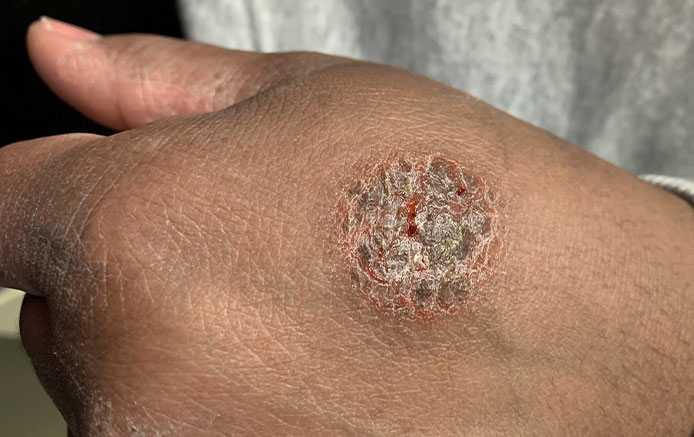
SERVICES
Solar Keratosis
What is solar keratosis?
Solar keratoses, also known as actinic keratoses, are pre-cancerous dry, scaly patches of skin that have been damaged by long term exposure to ultraviolet light. They often appear in groups of several growths, typically on areas of the body exposed to sunlight regularly. Pre-cancerous means that the condition may progress to cancer if left untreated. Therefore, actinic keratoses must be monitored and treated if appropriate.
Solar keratosis develops typically on the scalp, back of the hands, the face, ears, back of the forearms, the shoulders and the neck. The size of the solar keratosis varies from tiny to an inch or more in diameter. Their colour varies from light to dark, with variations throughout the patches.
Symptoms of solar keratosis are rough, raised bumps on your skin. They vary in colour but usually have a yellow or brown crust on top. Other symptoms may include:
- Itching, burning or stinging sensation
- Dry, scaly lips
- Hornlike skin growths that stick out
- Pain or tenderness
- Loss of colour in the lips
- Bleeding
Seek medical attention if you notice patches on your skin, if the patches start bleeding, and if the patches change in colour, feel tender or develop into a lump. Getting these skin changes checked is essential as they could be caused by a severe condition such as cancer.
How is solar keratosis treated?
In some cases, solar keratosis may naturally resolve itself. However, when the condition is pre-cancerous, action is needed. As a dermatologist, Dr Zinzi Limba may recommend the following treatment options:
Medication
This includes the prescription of various creams and gels like diclofenac gel, fluorouracil cream, ingenol mebutate gel and imiquimod cream. These creams and gels should be applied directly to the affected areas of the skin.
Photodynamic therapy
This therapy involves the dermatologist applying a chemical to the affected area of the skin. An artificial light is shone on the chemical, killing the damaged cells and removing the solar keratosis.
Cryotherapy
This therapy involves using liquid nitrogen to the affected area of the skin to freeze the lesions. As the skin heals, the lesions fall off, which then allows new skin to appear.
Cautery
This is a procedure that involves the use of a particular instrument called a curette to scrape off the damaged skin cells.
Solar Keratosis FAQ:
What are the risk factors of developing solar keratosis?
Anyone can develop solar keratosis. However, there are risk factors that increase the chances of developing solar keratosis, such as:
- People who are 40 years and above
- A long history of sunburn or extreme sun exposure
- Living in a sunny environment
- The use of tanning beds
- Having a history of developing solar keratosis
- Having lighter hair or eyes colour
- Tending to burn in the sun
Can solar keratosis be prevented?
Yes, the condition can be prevented through lifestyle changes and being aware of your exposure to UV rays. Always make sure to apply sunscreen/protection before going out into the sun.
Does having solar keratosis increase the risk of skin cancer?
Yes, because solar keratosis is a pre-cancerous condition.

